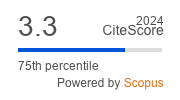Article | Open Access
Gendered Practices in Child Protection: Shifting Mother Accountability and Father Invisibility in Situations of Domestic Violence
| Views: | 4851 | | | Downloads: | 3722 |
Abstract: This article reports on an exploratory, qualitative, multiple-methods study that included individual interviews and a focus group with child protection services (CPS) workers in a large city in Alberta, Canada. The findings illuminate current CPS worker practices in situations of domestic violence where inclusion and exclusion decisions are made for service provision, and the ways in which documents reflect these day-to-day practices; how service user descriptions are constructed and reconstructed, the social problem of domestic violence conceptualized, and the ways in which professional development training encourages critical thinking about existing practices to create new solutions for families experiencing domestic violence. Thematic analysis reveals three themes about CPS workers’ experience: 1) current practices reflect invisibility of men and accountability of women; 2) personal and professional shift in perspectives on who to work with, gender expectations, and how CPS are delivered; and 3) reflexive practice into potential intervention strategies and professional development training. The findings suggest specific recommendations for practice including the need to engage men in child welfare practice, shift perspective about service delivery with families experiencing domestic violence, and account for gender norms and practices in service delivery.
Keywords: child protection; father invisibility; gender norms; masculinity; mother accountability; parental inclusion; professional development
Published:
Issue:
Vol 7, No 1 (2019): “Producing People” in Documents and Meetings in Human Service Organizations
© Beth Archer-Kuhn, Stefan de Villiers. This is an open access article distributed under the terms of the Creative Commons Attribution 4.0 license (http://creativecommons.org/licenses/by/4.0), which permits any use, distribution, and reproduction of the work without further permission provided the original author(s) and source are credited.


